Beans belong to a large family with about 18000 members.
They are an easy crop for vegetable gardening.
Beans are so easy to start that kids use them in their science projects about plant growth.
Warm temperature and bright sunlight are the two major demands of this plant.
Beans are warm-season vegetables and grow as a vine or bush.
It takes only 50 to 75 days for pod production.
Luckily, they are light feeders that do not need lots of feeding.
However, fertilizing the beans with good quality fertilizer will nourish the plant and the garden.
Are you looking for the best fertilizers for beans but are not sure what the best options are?
Don’t worry; we have carefully created this buying guide based on our experience and research to help you enjoy homegrown beans.
We get commissions for purchases made through links in this post.
Best Fertilizers for Beans
The best fertilizers for beans have an NPK value of 5-10-10 and are therefore low in nitrogen (N) and higher in potassium (P) and phosphorus (K). Nitrogen can increase the yield if the soil you are planting in is low in nitrogen (N). If there is sufficient nitrogen (N) present dry beans take in nitrogen through the atmosphere and no nitrogen (N) needs to be added. Phosphorus (P) should be applied as a banded fertilizer and not broadcasted. Potassium (K) should be broadcasted in an amount depending on soil test values. Especially to sandy soils low in potassium (K).
The best fertilizers for beans are:
- Best Overall Fertilizer for Beans – Garden-tone, Herb and Vegetable Food by Espoma
- Best Liquid Fertilizer for Beans – All-Purpose Plant Food by Miracle-Gro
- Best for Budget Fertilizer for Beans – Vegetable Garden by Down to Earth
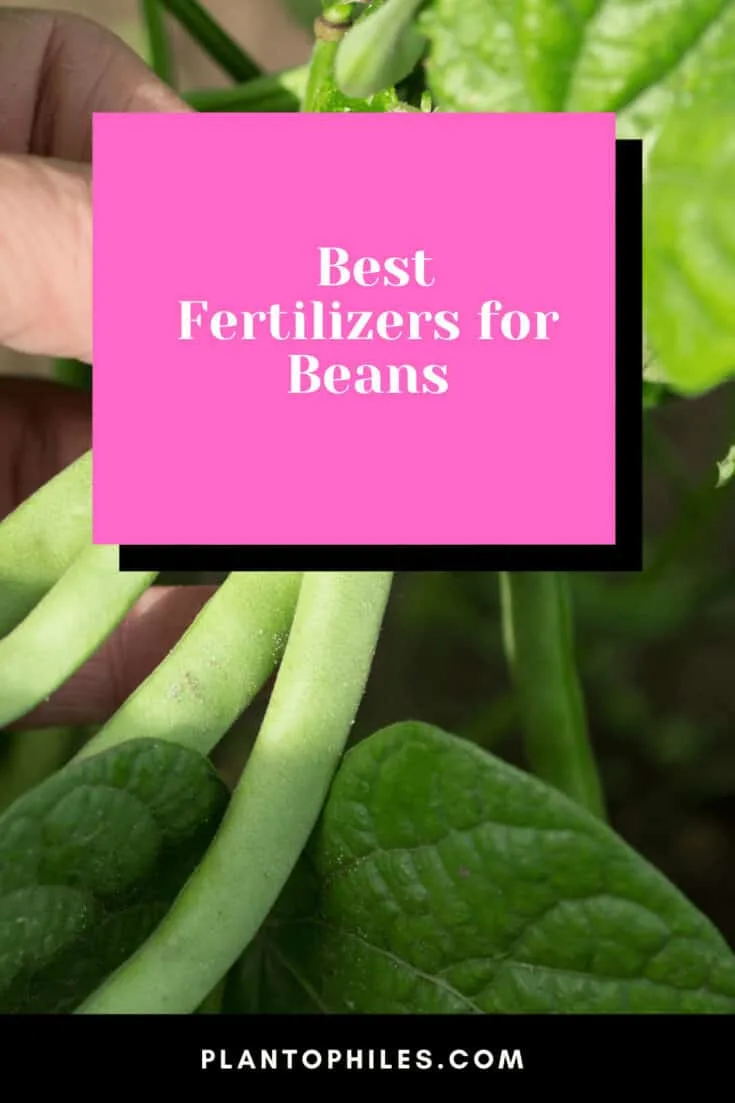
Best fertilizers for beans
Table of Contents
Best Fertilizer for Beans
Garden-tone, Herb and Vegetable Food by Espoma – Best Overall Fertilizer for Beans
Espoma has supplied garden fertilizers since 1929. They have optimized their plant fertilizers using the Bio-tone formula.
Their plant foods are designed to feed a particular variety of houseplants. This approach ensures your plant gets the most of what is required for maximum growth.
Because although all houseplants need fertilizer, each variety needs different nutrients.
The Bio-tone is a healthy blend of microbes, and it’s only available in Espoma fertilizers.
The Bio-tone performs several duties for the houseplants, but the main ones are faster conversion of nutrients, reduction in soil compaction for better root growth, and water movement.
The Garden-tone is dedicated to the lush green vegetable and herbs in your garden or indoor pots.
The Bio-tone is a special blend of plant nutrients for long-lasting feeding. This organic fertilizer will work as a slow-release fertilizer to avoid any burns or root damage.
This plant food is designed for organic gardeners; therefore, it has no fillers or sludge. With 100% natural ingredients, it will definitely enhance the flavor of your homegrown vegetables.
If you want to use the Garden-tone as a starter fertilizer, mix it with the soil before planting the beans. For young seedlings, wait for 1 week after transplanting.
An established beans plant needs regular monthly feeding with this fertilizer. Make sure you feed it every month from May through August.
For individual houseplants, this fertilizer should be spread near the drip line. For vegetables growing in rows, sprinkle the Garden-tone on each side of the row.
It is important to supply this plant food via soil application, avoid contact with the leaves or stems of the plant.
The NPK ratio of Garden-tone is 3-4-4.
Pros
- Suitable for growing warm and cool-season herbs or vegetables
- Ensures long term feeding
- Enhances the flavor of edible plants
- 100% natural and organic with zero fillers
- Contains the unique Bio-tone formula that has 50% more active microbes
- Improves the water retention capacity of the soil
Cons
- Quite strong smell of manure; even outdoors, the smell can last for several days
- Causes worms and flies infection
- Not OMRI listed
- A white fungus starts growing on the soil surface after adding the Garden-tone
Find more info about this natural fertilizer by clicking here.
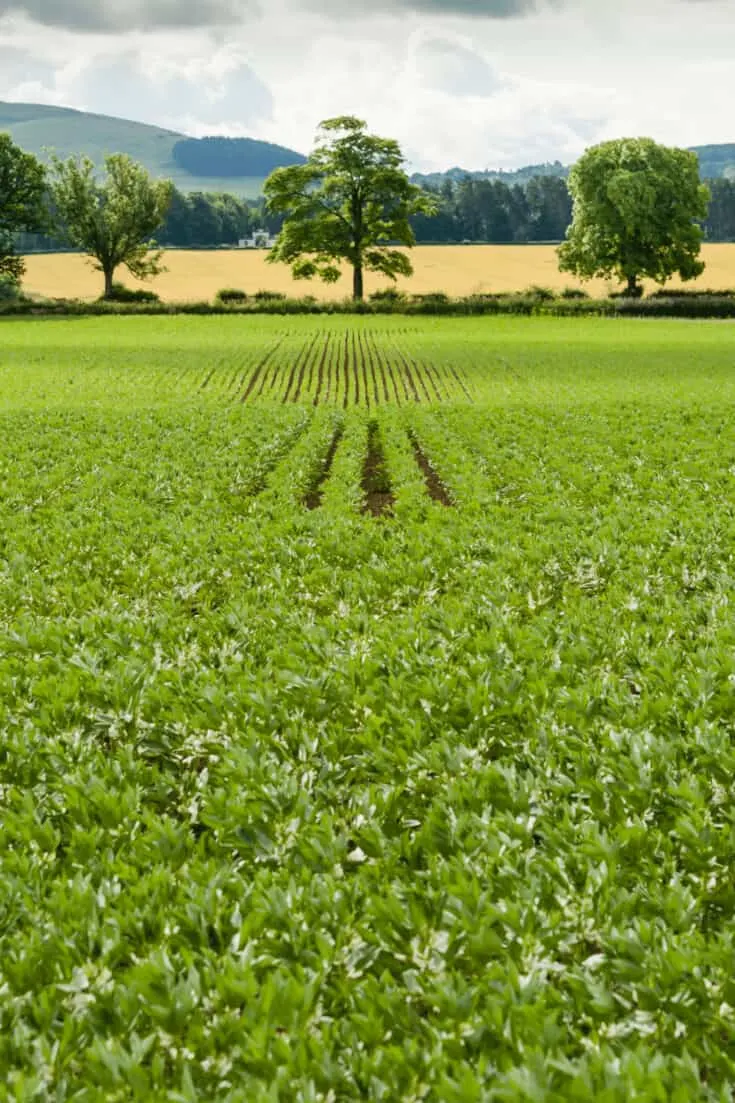
Nitrogen (N) should be the lowest value in the NPK equation
All-Purpose Plant Food by Miracle-Gro – Best Liquid Fertilizer for Beans
To grow the best green beans, you need the best plant food in the market. Miracle-Gro is one of the superior brands that offer high-quality gardening products at reasonable prices.
As a water-soluble formula, this fertilizer feeds the vegetables and other plants instantly to grow bigger vegetables.
This product gives guaranteed results, and you can clearly see the difference between a fed and unfed plant. If your aim is to grow bigger, this is the plant food you need for the beans.
Common houseplants, including green beans, need a weekly dose of this fertilizer to achieve the results promised by the manufacturer. If your plant looks fine, you can apply this fertilizer after two weeks.
Fertilizer burns are a big concern for vegetable and fruit gardeners as they can ruin their year-long harvest. But this won’t be an issue with this All-purpose plant food.
Firstly, this fertilizer suits the requirements of all types of plants. Secondly, the application rates recommended for this are based on individual plant needs to avoid any chemical burns or overfeeding.
You need a watering can or garden feeder to apply this fertilizer.
My preference is a watering can; simply add fertilizer to the watering can, pour water, and mix the fertilizer. Now water your plant with this mixture.
For outdoor beans, you will use 1 tablespoon of fertilizer to prepare a one-gallon mixture. Each gallon can feed up to 10 sq ft of area.
This plant food is filled with healthy nutrients required for the growth of green vegetables; the NPK is 24-8-16.
Pros
- Increases the size of the vegetables
- Instantly feeds the plant in liquid form
- Suitable for all varieties of houseplants
- Will not burn your garden plants
- Available in multiple sizes
- Can fix yellowing on green beans
Cons
- Too expensive for the quantity
- Since it has high nutrients ratios, it can kill the plants if they are too young or weak
- Scoop was missing for some buyers
You can find more details about this fertilizer here.
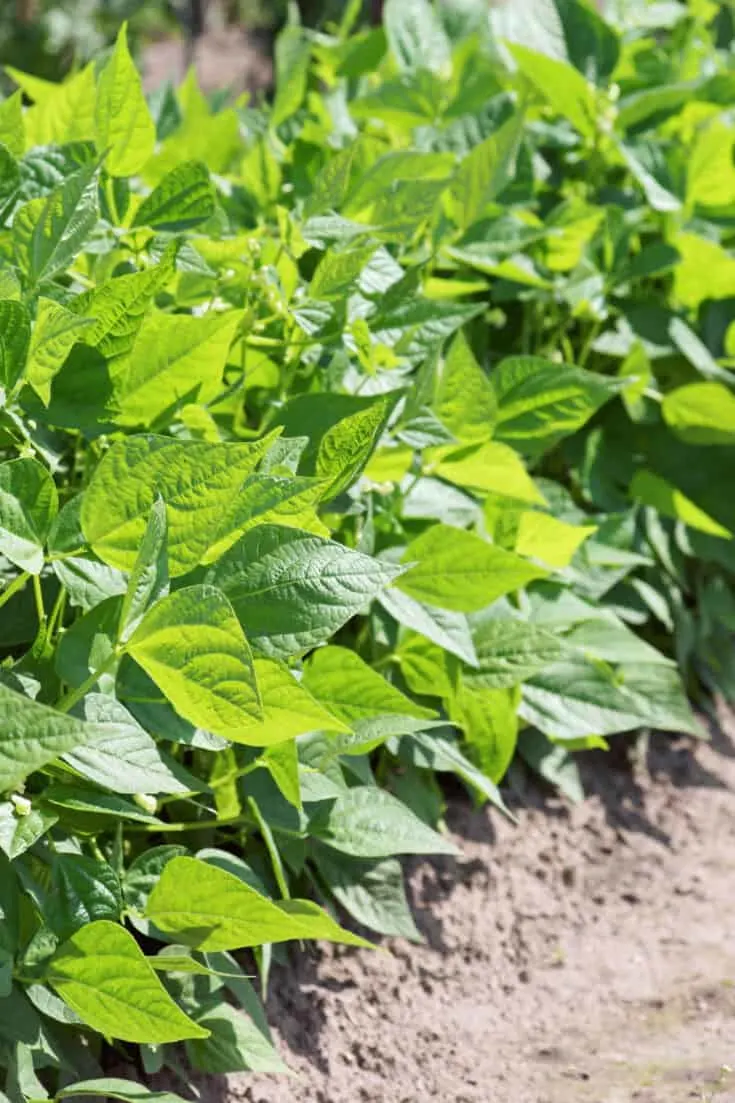
Potassium (P) should be applied as band fertilizer
Vegetable and Tomato Granular Plant Food by Jobe’s Organics – Best Granular Fertilizer for Beans
Gardens prefer granular plant foods for their long-term results. This fertilizer remains in the soil and feed your beans to produce the best quality vegetables.
You can use this fertilizer in 3 various ways. You can use it for the improvement of the soil quality while preparing the soil.
It can feed seeds as well as new plantings of green beans. It can also be used for an established plant that needs nutrition for fruit or vegetable production.
This is an environment-friendly product that provides all the nutrients in an organic way. It also contains the Biozome, which is created by combining archaea, mycorrhizal, and other healthy bacteria.
The Biozome plays an important role in resisting droughts, pests, or diseases. It encourages more growth on houseplants by improving the soil structure and organic content in the soil mixture.
This fertilizer also contains bone meal that is essential for roots, blooming, and fruit production. Bone meal is also rich in phosphorus and calcium.
The soil’s organic matter will improve the overall fertility. This fertilizer contains processed manure that is formulated to supply the three macronutrients, calcium and sulfur in high amounts.
Follow the directions suggested by the manufacturer for seedlings and established plants to avoid the risk of burning the beans.
This fertilizer also provides a 6-month satisfaction guarantee. So if you’re not satisfied with the product’s results, ask the manufacturer for a refund.
The fertilizer analysis for this organic plant food is 2-5-3.
Pros
- Best for all types of vegetables and tomatoes
- Safe for pets and kids
- Rich in sulfur and calcium
- Enhanced using Biozome, processed manure, and bone meal
- Organic plant food certified by OMRI
- Strengthens the root system
- Fungi and bacteria in this fertilizer break the nutrients faster compared to regular fertilizers
Cons
- Can result in a fungus invasion
- Stinky smell
Don’t forget to take a look at this product here.
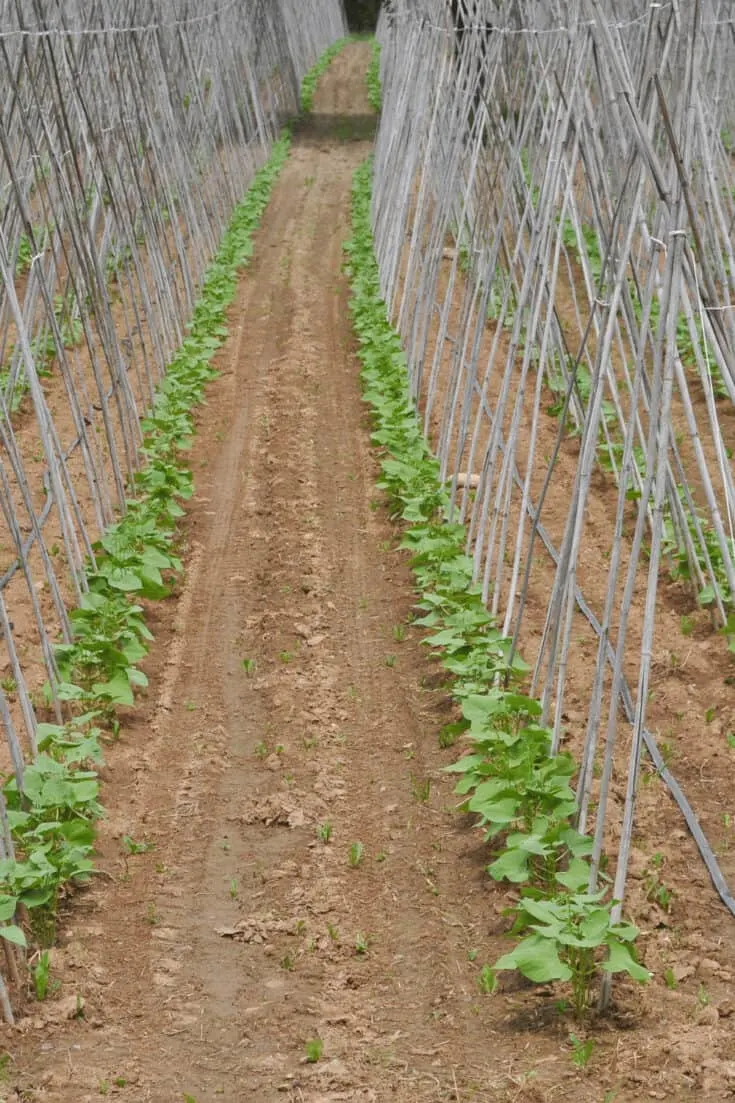
Phosphorus (K) can be broadcasted
Vegetable Garden by Down to Earth – Best for Budget Fertilizer for Beans
This fertilizer alone can take care of all the vegetables in your garden. It is designed to give a balanced amount of nitrogen, phosphorus, and potassium in the NPK ratio of 4-4-4. This natural plant food can be used in greenhouses and hobby farms without burning any plants.
It’s ideal plant food for growing herbs, spring and summer veggies. I would suggest using it as a fertilizer starter for all the spring vegetables.
This formula can be used for the entire growing season to treat any vegetables or herb plant.
I’ve always composted the box for this fertilizer to reduce waste.
Pros
- Can be used for spring and summer vegetables
- Works best as a starter plant food for the spring plantings
- Listed by OMRI, which makes it safe to use in organic gardening
- All the nutrients in this fertilizer are derived from natural sources like alfalfa meal, fishbone meal, kelp meal, feather meal, etc.
- Does not contain any toxic ingredients that can contaminate your vegetables
Cons
- Customers received opened or used packages
Check out this incredible fertilizer here.
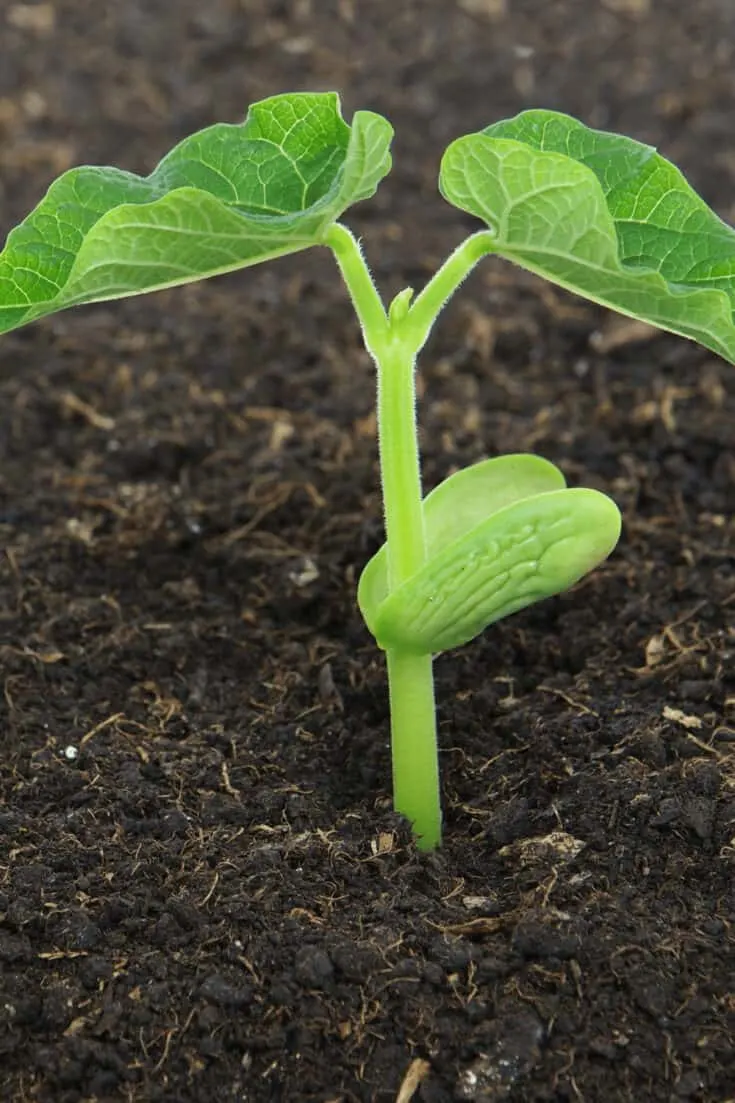
Beans should not come in contact with fertilizer directly
Home Grown, Tomato, Vegetable and Herb fertilizer by Dr. Earth – Best Continuous Release Fertilizer for Beans
The specialty of this fertilizer is the TruBiotic.
It is a natural blend of mycorrhizae and soil microorganisms that will increase biological activity in your garden soil.
This blend offers greater biological variation and adaptability within the soil ecosystem.
This plant food can not only feed but also enhance the soil for your summer and winter crops.
Everything in this fertilizer is natural as there is no GMO chicken manure or other chemical products.
The microorganisms in TruBiotic will break down the nutrient content for better absorption by the plant.
These microorganisms will increase the drought tolerance of your houseplants so that they are better prepared to handle a tough summer.
Most gardeners are curious about the ingredients in natural fertilizers.
The manufacturer has clearly listed that the nutrients in this fertilizer come from ocean plants, land plants, mined minerals, fish, and fish bones.
You can grow an organic crop of beans with this fertilizer to share with friends and family.
While most fertilizers are only OMRI listed, this one is recommended for organic gardening by four different bodies: Organic Material Review Institute (OMRI), California Certified Organic Farmers (CCOF), Organic Input Materials (OIM), and National Organic Program (NOP).
This fertilizer has an NPK ratio of 4-6-3; all these primary and secondary nutrients are continuously released into the soil.
You do not have to use any chemical fertilizer for your beans once they are regularly fed with this fertilizer.
Pros
- Can be applied to vegetables in containers or garden soil
- Can be used as a starter fertilizer, transplant fertilizer, top-dress fertilizer, and compost tea
- More nutrients are available, which improve the performance of homegrown vegetables
- The roots can absorb the nutrients better and faster
- Feed grade ingredients are used
- Certified fertilizer for organic food production
- Adds nutritional value and flavor to the vegetables
- Safe to use around humans and pets
Cons
- Not for indoor potted plants because of the stinky smell
- Can cause bug infestation, specifically fungus gnats
- The package is not designed for long term storage and use
- The smell can attract dogs
Don’t forget to take a look at this incredible fertilizer here.
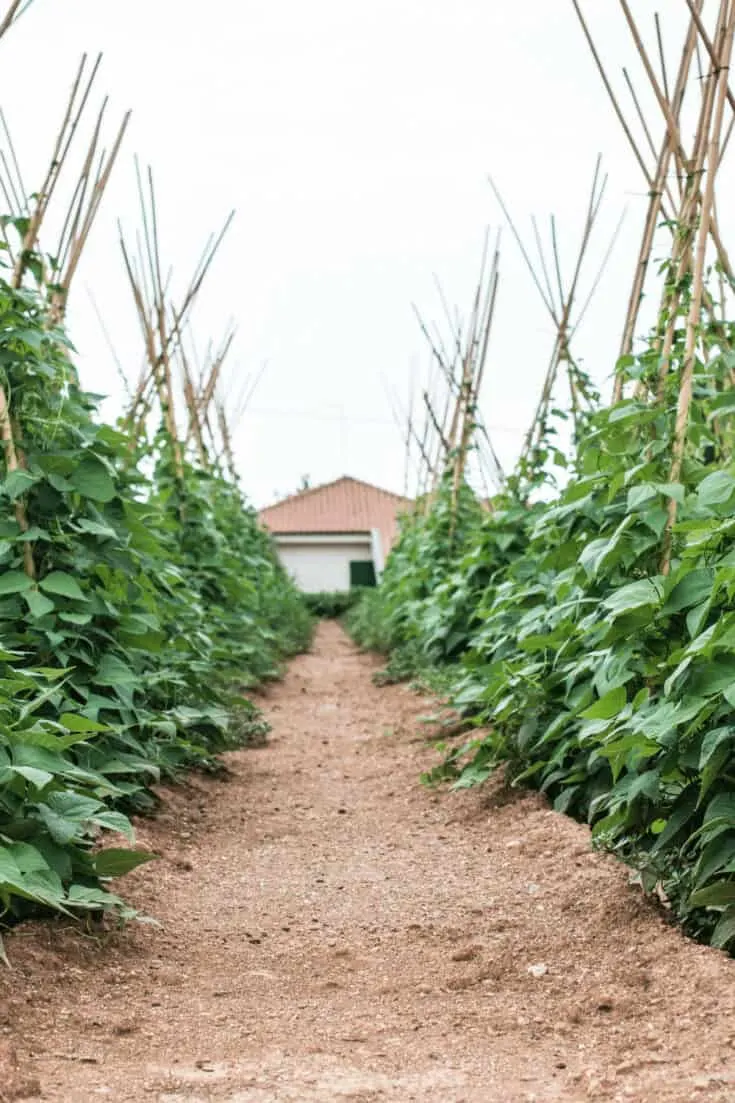
Beans take in most nitrogen (N) through the atmosphere
Shake n’ Feed Tomato, Fruit, and Vegetable Plant Food by Miracle-Gro – Best Calcium-rich Fertilizer for Beans
Shake n’ Feed is the top choice of several gardening enthusiasts, including myself. If you want to repair the natural soil structure and feed the living organisms in the soil, go for this fertilizer.
This Shake n’ Feed has more than one benefit for gardeners and plants.
It is filled with several natural ingredients that will serve as food for the soil microbes. The main ones are earthworm castings, kelp, feather, and bone meal.
It also nourishes the roots, leaves, stems, fruits, and flowers on the plant. If you fertilize the soil evenly, this plant food will last in the soil for up to 3 months. Your plants will grow strong and give higher yields.
This fertilizer contains 5.6% calcium, which is essential for the healthy growth of several plants.
This element will make the cells walls of the plant stronger to increase fruit and vegetable production. It especially enhances the quality of green vegetables.
This fertilizer is also high in macronutrients; there is 10% nitrogen, 5% phosphorus, and 15% potassium.
For green beans in the garden soil, spread the Shake n’ Feed evenly around the plant in such a way that it’s mixed in the top 3 inches or 7.6 cm of soil. Water the area well to start the feeding process.
For potted vegetables, use this fertilizer while planting or in soil preparation.
1 tablespoon of fertilizer can feed one sq ft of crop area, so adjust the quantities based on your garden size.
For potted plants, the fertilizer amount depends on the pot’s size. Additional fertilizer is needed for bigger diameter pots.
To have a continuous supply of nutrients feed the plants every 3 months.
Pros
- Can be used for in-ground and container plants
- Protects edible plants from calcium deficiency disorders
- Nourishes the vegetables above and below the soil
- Has earthworm castings
- Feeds the soil microbes
- Increase water efficiency of the plant by strengthening the roots
Cons
- Not for young vegetables or fruit plants
- The seal or lid can break during shipping
- Can cause mold and gnats in the soil
Make sure to sneak a peek at this incredible fertilizer here.
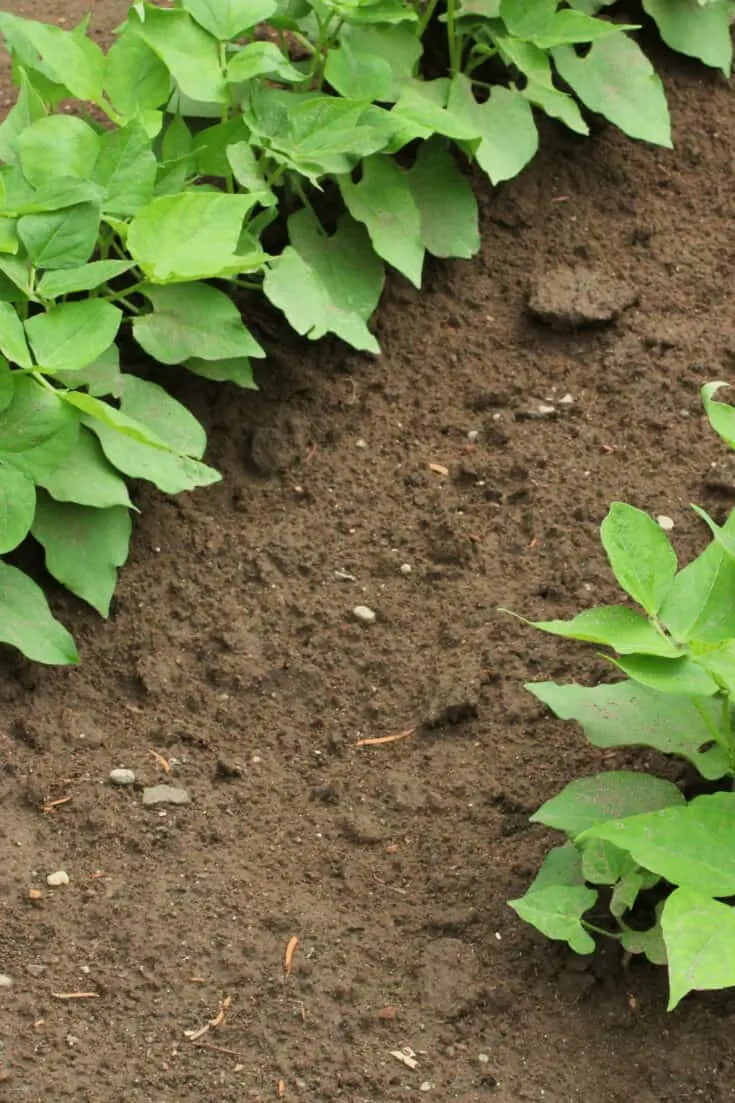
Always do a soil test before planting any beans. Only that way will you know what the soil needs to grow beans
Tomato and Vegetable Plant Food by Old farmer’s Almanac – Best Organic Fertilizer for Beans
Whether it’s beans, pepper, tomatoes, or corn, this fertilizer does wonders for all of them. It’s an organic blend of macronutrients in the ratios 8-4-8.
Your plants will also get sulfur as this fertilizer mix has 2.9% sulfur.
It supplies instant food to the plant parts that need at-the-spot nutrition. However, it can also function as a slow-release fertilizer as some nutrients are released over a period of time.
This is the best organic fertilizer for vegetables as it has no harmful chemicals. Another reason is that it provides protein-based nutrition. The nutrients will remain in the soil for 6 to 8 weeks.
This fertilizer works in coordination with the natural ecosystem of the soil.
This single pack will treat all the vegetables growing in an area of 250 sq ft. This makes it very economical for large-scale farming.
The application rates’ detailed instructions are found on the package.
Pros
- One of the finest OMRI listed granular fertilizer
- Does not contain manure
- Can be used for fruits, herbs, shrubs, and veggies
- Gives both slow and quick release nutrients
- Can be used for gardens in any geographic area
- Contains sulfate of potash and other natural ingredients like soybean meal, bone meal, etc.
Cons
- Customers complained that the fertilizer turned into mold within few hours
- Strong smell that’s unbearable indoors
You can buy this fertilizer by clicking here.
Fertilizers for Beans Buying Guide
Before using any fertilizer you should take soil samples before planting any beans according to the University of Nebraska.
Take the samples from the tillage layer between 0-8”.
Nebraska University warns that no fertilizer should be in contact with the bean seeds when planting.
Granular Fertilizers
Granular fertilizers are small tablets or pellets of plant food. This fertilizer is spread directly on the ground without mixing it with anything.
These are designed for gardeners that need long-term feeding solutions. You can even buy a granular fertilizer that is organic to take care of your crops organically.
Granular fertilizers can also be quick-release. These will supply a quick dose of nitrogen to wilting plants.
If you are using a slow-release granular fertilizer, you will have to repeat the application every 3 or 6 months, depending on the brand you are using.
Winner: Vegetable and Tomato Granular Plant Food by Jobe’s Organics
Liquid Fertilizers
This type of fertilizer can feed the necessary nutrients through the leaves or soil. Choose the liquid fertilizer with the right balance of nutrient ratios or NPK.
Certain liquid fertilizers can alter the soil pH, so make sure you research well about the product you are going to buy.
These fertilizers provide nutrients instantly compared to granules or organic fertilizers that release the nutrients slowly.
Winner: All Purpose Plant Food by Miracle-Gro
Fertilizing Beans
Before buying any fertilizer, get your soil tested in a local gardening center. This will give you the complete soil, nutrients deficiencies, and pH level.
To protect the beans plant from burning, avoid adding the fertilizer too close to the stem or foliage. Granular fertilizers should be applied carefully because if they touch the foliage, they can burn the leaves.
Beans thrive in slightly acidic or neutral soil. Meaning your soil pH should be between 6 and 7. The NPK of your fertilizer for beans should be decided after knowing the deficiencies in the soil.
The NPK represents the percentage of nitrogen, phosphorus, and potassium. For example, if your soil test indicates a nitrogen deficiency, you should buy a fertilizer that is high in nitrogen.
These three are the major components for the growth of any houseplants, including beans. But commercial or organic fertilizers also contain trace elements like magnesium, sulfur, copper, etc.
Did you know that beans can produce their own nitrogen, and most gardeners report that this nitrogen is enough for the entire growing season?
I would recommend nourishing your soil to eliminate deficiencies for other elements.
The first application for beans should be done one day before planting. You will thoroughly mix the fertilizer in the garden soil. Make sure it’s mixed 2 or 3 inches deep.
You should reapply fertilizer for beans when the bean pods start appearing or after the blooms have opened.
This ensures a high yield. The second application is usually a row application.
Avoid overfeeding with a nitrogen-rich fertilizer; otherwise, your plant will produce more leaves and fewer beans.
It also increases the pest and disease infection risk.
You should add nitrogen only if the soil indicates nitrogen deficiency or the plant has pale green, yellow foliage.
Phosphorus helps in developing a vigorous roots system for the bean plants.
The most common way of applying fertilizers is row application. In this method, the fertilizer is applied to the sides of the rows before planting the beans.
To add fertilizer for new transplants, dig holes in the soil to fill them with the fertilizer. The plants will be transplanted in these holes.
Some gardeners also add the fertilizer using the broadcast method.
Following are few tips to produce the best bean crop.
- Avoid planting beans in alkaline soils as they will deprive the plant of the nutrients in the soil.
- Avoid over-fertilizing the plant early in the growing season as it prevents it from producing blooms as well as pods.
- If your bean plant has stunted growth and new leaves are turning yellow, your soil has zinc deficiency. Immediately treat with a zinc solution to fix this problem.
- When the plant starts developing bean pods, fertilize with a potassium-rich fertilizer.
- Beans are fast growers, so adding too much plant food can slow down the growth rate.
- Follow the fertilizer label’s instructions for application rates and application methods.
Conclusion
We have shared a complete list of the best fertilizers for beans. This article also gives useful information and tips about feeding beans.
The key point is that beans need a low nitrogen fertilizer to produce the best yield. Your fertilizer should have high amounts of nitrogen and phosphorus.
If you want to study more about bean growing, read our article about yellow leaves on bean plants.

Daniel has been a plant enthusiast for over 20 years. He owns hundreds of houseplants and prepares for the chili growing seasons yearly with great anticipation. His favorite plants are plant species in the Araceae family, such as Monstera, Philodendron, and Anthurium. He also loves gardening and is growing hot peppers, tomatoes, and many more vegetables.
Last update on 2024-07-25 / Affiliate links / Images from Amazon Product Advertising API


